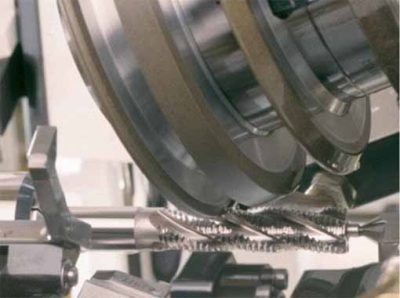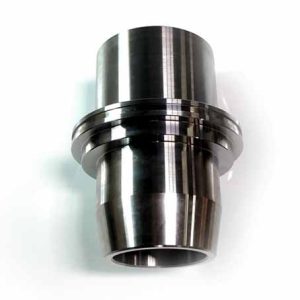Tarkkuus-CNC-työstöteknologian taso paranee jatkuvasti. Hiontaa on käytetty laajalti metallien ja muiden materiaalien karkeassa ja hienossa työstyksessä, ja se on erittäin tärkeä CNC-työstömenetelmä. Nykyisessä, hiontakäsittelystä on tullut tehokkain ja laajimmin käytetty perustekniikka nykyaikaisen koneiden valmistuksen alalla tarkkuuden ja erittäin tarkan käsittelyn toteuttamiseksi. Tarjoa ihmisille korkean tarkkuuden kehittämistä ja tutkimusta, korkealaatuisia, ja pitkälle automatisoidut tekniset laitteet.

Tarkkuus CNC-hionta
Hionta tarkoittaa käsittelymenetelmää materiaalien poistamiseksi hioma-aineilla tai hiomatyökaluilla. Yleisesti ottaen, se voidaan luokitella hiomalaikan lineaarisen nopeuden mukaan:
◆ Tavallinen hionta, hionta pyörän nopeudella pienempi kuin 45 m/s;
◆ Nopea hionta, hiomalaikan nopeus suurempi kuin 45 m/s;
◆ Erittäin nopea hionta, hiomalaikan nopeus yli 150 m/s;
By grinding the grinding efficiency is divided into ordinary grinding, grinding efficiency (high-speed grinding, ultra-high speed grinding, creep feed grinding, high efficiency deep grinding, grinding fast short stroke and high-speed heavy-duty grinding).
The grinding precision that can be achieved by CNC grinding has different precision ranges in different periods of production development. Nykyisessä, according to the grinding precision, the grinding is divided into:
◆ Ordinary CNC grinding (processing precision> 1μm, surface roughness Ra0.16~1.25μm)
◆ Precision CNC grinding (processing accuracy 1~0.5μm, surface roughness Ra0.04~1.25μm)
◆ Ultra-precision CNC grinding (processing accuracy ≤0.01μm, surface roughness Ra≤0.01μm)

Precision grinding of automobile pistons
Precision machining refers to a machining process with a high degree of machining accuracy and surface quality in a certain period of development. Nykyisessä, it refers to the processing technology with the machining accuracy of the processed parts of 1 to 0.1 µm and the surface roughness value of Ra 0.2 to 0.01 µm.
Precision grinding is currently one of the main methods for precision machining of ferrous metals such as iron and steel and brittle and hard materials such as semiconductors. It occupies a very important position in modern machinery and electronic equipment manufacturing technology.
Precision CNC grinding generally uses high-hardness abrasive wheels such as diamond and cubic boron nitride. It mainly relies on the fine dressing of the grinding wheel, using a diamond dressing tool with a very small and uniform microfeed (10-15mm/min). A large number of micro blades of the same height are obtained, and the grinding marks on the machined surface are fine, and finally non-spark polishing is used.
Due to the combined effects of micro-cutting, slippage and friction, low surface roughness values and high precision requirements are achieved. The chips of high-precision grinding are very thin, and the abrasive grains of the grinding wheel are subjected to high stress. The surface of the abrasive particles is subjected to high temperature and high pressure, and generally uses high-hardness abrasive wheels such as diamond and cubic boron nitride for grinding.
 English
English العربية
العربية 中文(漢字)
中文(漢字) Čeština
Čeština Dansk
Dansk Nederlands
Nederlands Suomi
Suomi Français
Français Deutsch
Deutsch Italiano
Italiano 日本語
日本語 ಕನ್ನಡ
ಕನ್ನಡ 한국어
한국어 Português
Português Русский
Русский Slovenčina
Slovenčina Español
Español Svenska
Svenska Türkçe
Türkçe

